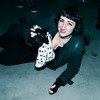
Advertisement

Jan Tytgat:Based on the size of the city and the fact that a lot of drug trafficking is taking place there.How did it work? Would you borrow books and test their pages and the cover? What were the titles?
The books were collected from the shelves in the library, then wrapped in a sterile plastic bag; next they were transported to the university of Leuven for microbiology tests (with my colleague Johan Van Eldere) and toxicology tests (my team). Among the titles were 50 Shades of Grey, children's comics (Jommeke, which is very popular here in Belgium) and thrillers. We focused on the covers.
Advertisement
Cocaine was found on the (plain) covers. We didn't check individual pages in the book.In what cases were THC found?
None, which was a surprise to me.All top ten borrowed titles tested positive for traces of cocaine—even a children's book. Were you surprised by the findings?
Yes, with this remark that "contamination" cannot be excluded, ie when books return to the library they are piled up on each other. This is sufficient to leave a mark.You have said: today's testing methods are so sensitive that traces of the drug originating from a contaminated book will be found in your hair, blood and urine. In what cases is this dangerous?
In no case this is dangerous; we have to emphasize this. The concentrations of cocaine—but also traces of micro-organisms—are so low, that it still can be considered as safe.Would people who read a book with cocaine in it test positive for cocaine use?
I have no evidence to state "yes," but I cannot exclude this either. It all depends on the frequency and dose of getting exposed to such a contaminated book. One concern I have is for instance the zero-tolerance policy which WADA World Anti-Doping Agency) adopts for cocaine (in urine). Modern toxicologists are capable of measuring incredibly sensitively, such that the needle in the haystack can be found. Imagine an athlete whose urine is positive for cocaine, albeit a minute concentration, i.e. a mere trace, not more, on the basis of which one can argue that there is no evidence to imagine a pharmacological or toxicological effect on the human body, and hence no effect on the physical performance. Yet, WADA will condemn such athlete… My proposal as scientist and forensic toxicologist is be that WADA starts working with a so-called "cut off" level for cocaine in urine. This means a value that is "high enough" such that one can be 100 percent certain. A concentration below the 'cut off' value is considered as negative, and vice versa. You can compare this with a legal limit for alcohol and driving under influence.

It remains worthwhile going to the library and reading books, for your intellectual development! One can suggest a good hygiene, ie, washing ones hands regularly. But having said this, one should also realize that the moment one leaves the library and is touching door handles, money, shaking hands with each other, etc., such encounter will be sufficient for a … novel exposure. And after all, too much hygiene isn't good either for our health: starting to live with gloves isn't a good idea, knowing that a certain challenge for our immune system is also beneficial.Did you test the library version of the Bible or will you in the near future?
Very good proposal and suggestion; no we didn't thus far, but eager to do so…
